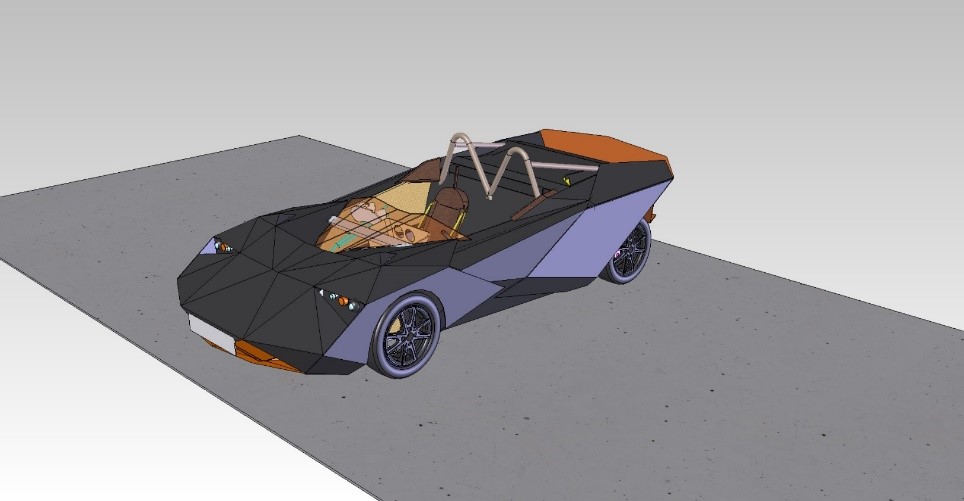15 December 2021

Suilven RDE Ltd, an automotive design SME, contacted the National Composites Centre (NCC) for help in exploring the use of natural fibre composites in their car body panels. Project SALSA looked into the likely environmental savings that could be made, as well as impact on the performance of the car.
Challenge
Historically, composite materials were used in the automotive industry for low production volume, high-end sports vehicles for performance benefits. However, the use of composites in the automotive industry is rising due to the benefits offered in terms of light weighting, which results in lower fuel consumption for petrol cars and extended range for electric vehicles. However, as the environmental benefit of lightweighting using composites is realised, focus is turning to the environmental impact of the materials used. Zero emissions and end-of-life goals are forcing the automotive industry to consider multiple aspects of sustainability, throughout the life cycle of their vehicles. The materials selected for car and other land vehicle components form a key part of these sustainability goals. As a result, natural fibre composites are beginning to gain traction for automotive applications as a more sustainable solution to their petrochemical counterparts. Tesla and Porsche have recently reported the use of natural fibres for car bodywork, offering a lightweight and lower cost solution with increased crash performance and a reduced impact on the environment.
Innovation
Using a rapid Global Warming Potential (GWP) calculation tool developed at the NCC and commercially available databases, the GWP of fibre selection (jute vs carbon) for the part was assessed. The analysis also included other industry key drivers such as cost of materials and mass of the resulting part, to understand their overall suitability.
The quantities of materials needed to meet strength requirements were calculated for each material option using a simple scaling by specific modulus, and subsequently used in the environmental and cost analyses.
Result
Results from this assessment indicate that the selection of Jute fibres composite would offer both environmental and cost benefits in comparison to the carbon fibre option in the materials selection stage, however this would produce a heavier body panel and therefore the performance of the car would be impacted. Expansion of this LCA to incorporate the use phase would provide additional data on the effect of fibre selection on the environmental impact across the service life of the vehicle.
Impact
Suilven is committed to exploring different sustainable options for the car body work, and this work has provided the key trade-offs between sustainability and performance needed for its design. The use of natural fibre systems could be a game changer for the automotive industry as they seek to reduce their carbon footprint in the fundamental materials and manufacture of the future car. This is reflected in the exponential uptake across all industries in the use of LCA for driving design decisions. The ability to understand key drivers for the sector and consider trade-offs based on environmental data, as well as performance and cost, allow for the best outcome for the design. The SALSA project set the foundations for a follow-up project, SILVIA, which investigated the use of natural fibres with bio-based and bio-degradable resin systems for automotive body panel solutions.
Chris Runciman, Owner of Suilven RDE Ltd, said: "This study quickly offered a clear picture on embodied and operational carbon for low volume car designers considering the natural fibre composites currently available. While the study was at a top level, it provided essential design guidance in this quickly evolving area of product design."


